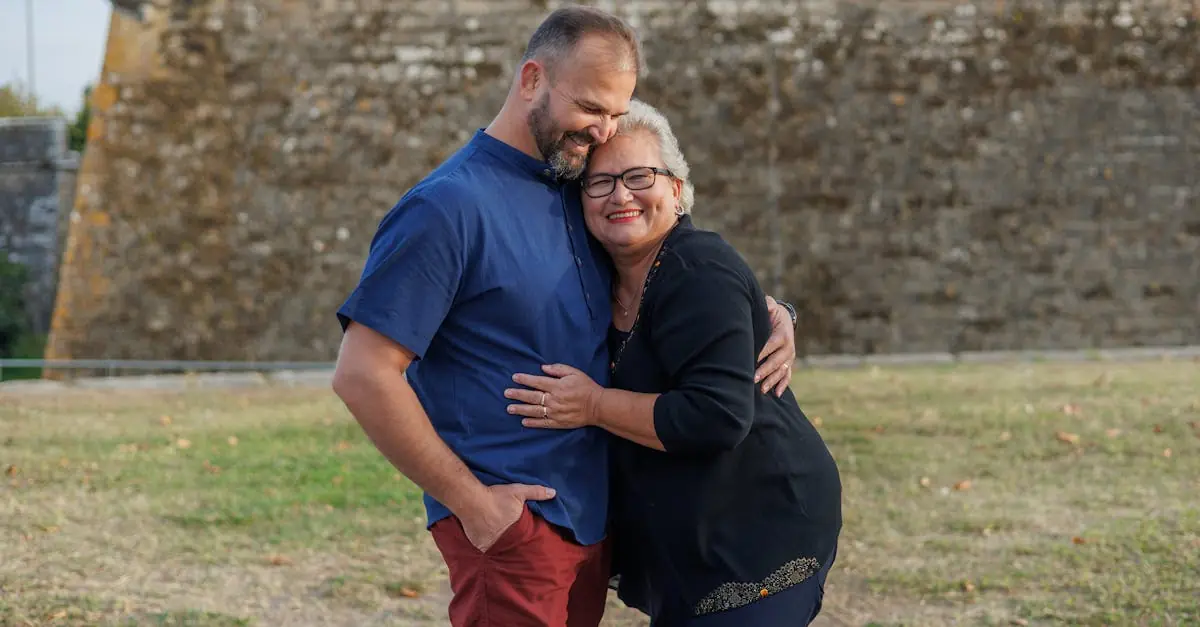Navigating the world of long-term senior care can feel like trying to find a needle in a haystack—if that needle were a perfect fit for your loved one’s needs and the haystack was filled with confusing options. With an aging population and a plethora of choices, it’s crucial to know what truly matters. After all, nobody wants to end up in a place that feels more like a waiting room than a home.
Table of Contents
ToggleOverview Of Long-Term Senior Care
Long-term senior care encompasses various services tailored to meet the needs of aging individuals. Understanding these options proves crucial for families seeking the best possible support for their loved ones.
Definition And Importance
Long-term senior care refers to a range of services designed to assist elderly individuals with daily living activities. Assistance may include personal care, medical support, and companionship. This support plays a vital role for seniors who face challenges due to chronic illnesses, cognitive decline, or other age-related issues. Prioritizing comfort and well-being is essential, as many seniors prefer to age in familiar surroundings, fostering a sense of belonging and purpose.
Types Of Long-Term Senior Care
Numerous types of long-term senior care facilitate varied needs and preferences. Assisted living facilities offer a balance of independence and assistance, catering to seniors who require minimal help with daily tasks. Nursing homes provide comprehensive medical care for individuals with significant health concerns. Home care services enable seniors to receive support within their own homes, promoting autonomy. Finally, hospice care focuses on providing comfort and dignity to those in the final stages of life. Each type serves a unique role in the spectrum of senior care, ensuring that every senior receives appropriate support based on individual needs.
In-Home Care Services
In-home care services provide essential support for seniors, ensuring they maintain their independence while receiving necessary assistance. These services cater to a variety of needs, making them a viable option for many families.
Benefits Of In-Home Care
In-home care offers personalized attention tailored to individual preferences. Seniors enjoy familiar surroundings, which significantly enhances comfort and well-being. Flexible scheduling allows caregivers to visit at convenient times, fitting seamlessly into the family’s routine. Skilled professionals handle medical tasks, ensuring compliance with prescribed treatments. Another advantage is the companionship fostered during interactions, reducing feelings of isolation. Cost-effectiveness plays a crucial role as well; in-home care often proves more economical than traditional facilities, making it an attractive alternative.
Challenges And Considerations
While in-home care presents various benefits, challenges exist that families must address. Assessing an individual’s safety at home remains paramount; modifications may be necessary to accommodate mobility issues. Caregiver availability can fluctuate, leading to inconsistencies in support. Family dynamics often complicate decisions, as discussions about care preferences might spark disagreements. Communicating effectively with caregivers helps set expectations and maintain quality of care. Navigating insurance coverage for in-home services can also pose difficulties, creating confusion for families seeking funding options.
Assisted Living Facilities
Assisted living facilities provide a balance of independence and support for seniors. These communities focus on enhancing quality of life while addressing individual care needs.
Features And Amenities
Assisted living facilities offer various features to ensure comfort and well-being. Spacious private or semi-private apartments provide residents a sense of home. Shared spaces like dining areas, activity rooms, and outdoor gardens foster social interaction. Staff usually coordinate activities such as fitness classes, arts and crafts, and group outings to promote engagement. Emergency response systems enhance safety, giving peace of mind to both residents and families. Nutritious meals prepared by on-site chefs cater to dietary needs, encouraging healthy eating and social dining experiences.
Costs And Financial Considerations
Costs for assisted living can vary significantly based on location, services, and amenities. Monthly fees typically range from $2,000 to $6,000, depending on the type of facility and level of assistance required. It’s essential to consider additional expenses for specialized care services when budgeting. Many families utilize long-term care insurance, Veterans benefits, or personal savings to cover these costs, enabling financial planning for future needs. Evaluating all options beforehand is crucial for making informed decisions regarding senior care expenses.
Nursing Homes
Nursing homes provide comprehensive care for seniors with significant medical or personal needs. These facilities prioritize the well-being and comfort of residents, ensuring adequate support.
Quality Of Care Standards
Quality of care in nursing homes stems from various regulations and guidelines. The Centers for Medicare and Medicaid Services sets standards addressing safety, staffing, and service delivery. Higher-rated facilities typically feature well-trained staff and better resources, creating a positive environment. Regular inspections and resident assessments help maintain standards and promote accountability. Families often review these ratings when selecting a nursing home to ensure their loved ones receive appropriate care.
Comparing Nursing Homes And Assisted Living
Nursing homes and assisted living facilities cater to different needs. Nursing homes offer 24/7 medical care, ideal for individuals requiring intensive support. In contrast, assisted living allows seniors more independence while still providing help with daily activities. Cost differences also exist, with nursing homes generally ranging from $7,000 to $10,000 per month compared to assisted living costs between $2,000 and $6,000. Understanding these distinctions helps families choose suitable options based on their loved ones’ requirements.
Specialized Care Options
Long-term senior care includes specialized care options tailored to meet unique needs. These options enhance the overall quality of life for seniors.
Memory Care Facilities
Memory care facilities focus on individuals with Alzheimer’s disease or other forms of dementia. Residents receive structured environments, promoting safety while enhancing cognitive functions. Trained staff provide personalized assistance with daily living activities. Social activities and therapies help stimulate memory and cognitive skills. Costs for memory care facilities typically range from $4,000 to $8,000 per month, reflecting the specialized services offered. These environments foster a sense of community, helping seniors feel secure and connected.
Palliative And Hospice Care
Palliative and hospice care prioritize comfort for patients with severe illnesses. Palliative care offers relief from symptoms through specialized medical treatments while allowing individuals to pursue curative options. Hospice care supports patients in the final stages of life, addressing emotional, spiritual, and physical needs. Families receive assistance from a dedicated team, which can include doctors, nurses, and social workers, ensuring comprehensive support. Typically, hospice care focuses on quality of life rather than curative measures. Costs can vary widely depending on services, with many insurance plans covering a significant portion.
Conclusion
Navigating the landscape of long-term senior care can be challenging for families. By understanding the various options available and prioritizing the needs of loved ones, families can make informed choices that enhance comfort and quality of life. Whether opting for in-home care or a specialized facility, the focus should always remain on creating a supportive environment that fosters independence and well-being. As the aging population grows, it’s crucial to stay informed about available resources and financial planning to ensure that seniors receive the care they deserve.







